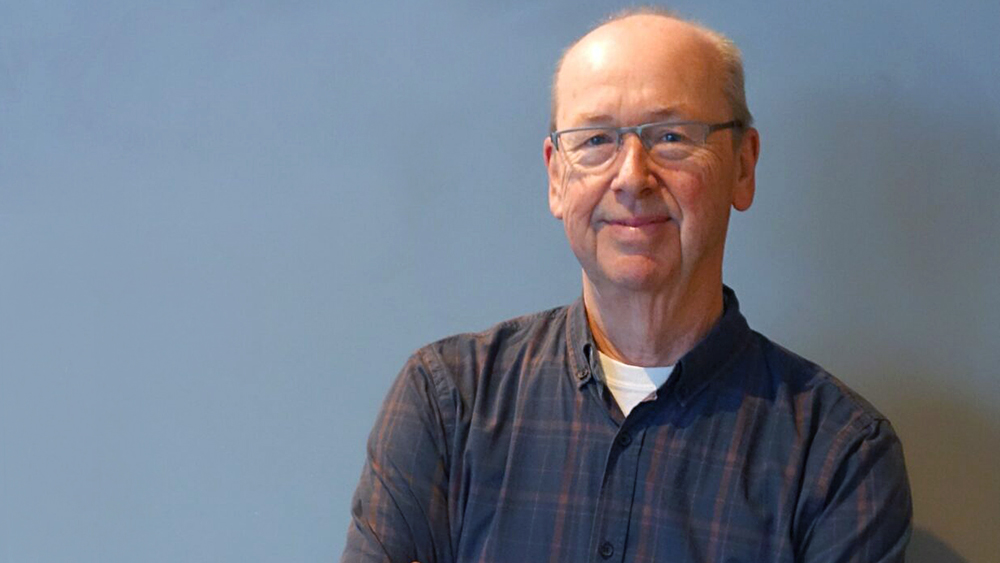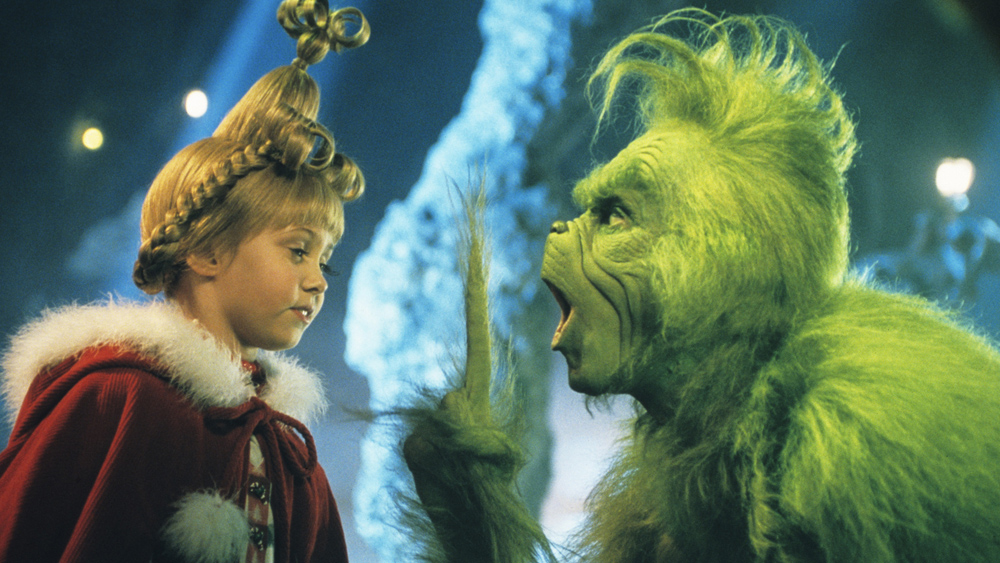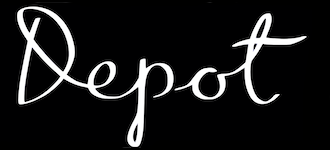
Welcome to my blog
Lewes Community Screen Chair of Trustees Robert Senior has held a lifelong passion for film. In this blog he shares some of his personal thoughts on films showing at Depot and on the wider industry.
CHRISTMAS CHEER AT THE DEPOT 2025
Published 15 December 2025
Here we go again into the festive holiday season, seemingly dominated by the third, longest and biggest of the Avatar movies, Avatar: Fire and Ash. This follows the (for many) disappointing sequel to the original Avatar: The Way of Water (2022) but that is still the third biggest grossing film of all time (the original Avatar remains at number one). James Cameron is definitely the man with the midas touch. Although he forgot the golden rule – never make a film set on water.
The new movie promises a huge spectacle and a stronger narrative but you have to buy into over three hours of long blue people doing stuff. I will give it a go.
Avatar: Fire and Ash (2025)
Of course that is not all that Depot has to offer this Christmas, Starting with the oldies we have two. Christmas is not Christmas without It’s A Wonderful Life (Frank Capra, 1945) but for those who have seen it fifty times, or never liked it, we also have The Bishop’s Wife (Henry Koster, 1947) which is also a Christmas fantasy movie this time featuring Cary Grant and David Niven. It looks highly entertaining and who can resist Grant as an Angel.
The Holdovers (Alexander Payne, 2023) is a sly and touching film from a master of older male characterization. It’s about college kids stuck with a grumpy professor over Christmas, and features a career best performance by Paul Giamatti (he won an Oscar). It explores gentle themes about youth and ageing and is consistently witty and entertaining. Watch out for a wonderful turn by Da’Vine Joy Randolph as a grieving mum.
Then we have the kids stuff. Well I have it on good authority that Muppet Christmas Carol (Brian Henson, 1992) is a faithful and touching adaptation of the Scrooge story and it might just be the ultimate legacy of the Jim Henson studio. It also has Michael Caine, now 92, as Scrooge. Meanwhile dismiss How the Grinch Stole Christmas (2000) at your peril. Directed by the well regarded Ron Howard it has the greatest of physical actors since Buster Keaton, Jim Carrey, at his brilliant best. Meanwhile Super Elfkins (2024) is a new animated Christmas movie from Germany directed by the effervescent Ute von Munchow-Pohl.

How the Grinch Stole Christmas (2000)
Love, Actually (Richard Curtis, 2002) is a perennial favourite featuring an all-star cast. It’s much loved by many, consistently amusing, and a perfect example of a little known film genre called Film Blanc. Finally, an oddity. Christmas, Again (Charles Poekel) was actually made in 2014 and screened at Sundance but has only just got a UK release. It’s a story about a Christmas tree salesmen directed by a Christmas tree salesmen, it’s quirky and touching, and at 80 minutes it won’t keep you too long away from the eggnog.
Hope you all have a great Christmas and Happy New Year.
Earlier blogs
Click a post title to read one of Robert’s past blog entries.
NOVEMBER 2025 - 10 November 2025
The recent nomination of Depot as one of the five best cinemas in the UK (and probably beyond) has had me thinking about the state of the cinema industry at the moment.
The story is well told. Pre-covid global returns were strong even though home streaming services were powering up, but suffered a significant slump during the pandemic itself. The numbers have not as yet fully recovered, which is blamed on economic woes, the further expansion of streaming and delays and disruptions caused by two post-covid industry strikes.
But in fact the nature of the problem may lie in the films themselves. Hollywood is churning out way too many sequels and routine fare, leaving the more ambitious directors with a lot of work to do. They in turn want to do something different and the bigger the budget, the better. Paul Thomas Anderson’s One Battle After Another is a great movie, but I don’t see $130 million on the screen. And given that the quirky narrative challenged some viewers, it flopped. And it is not alone. Meanwhile the Marvel franchise, which underpinned global revenues a decade before Covid, appears to have shot its bolt. Must-see films are few and far between.
UK BOX OFFICE ADMISSIONS AND REVENUES 2018-2025
The pattern is very similar here in the UK with almost 20 million fewer attendances in 2025 than in 2017. So maybe those higher numbers are not set to return and the industry needs to adapt to that reality. The UK market is also reliant on those tentpole films but not to quite the same extent. Films have a longer duration than the big weekend openings you see elsewhere. And the British like British films about society, history and endeavor rooted in some version of reality. A good recent example was The Salt Path, although that didn’t end well. But across the country. The big movies are the same as elsewhere – action blockbusters and kids animation. Although Bridget Jones : Mad About the Boy sneaked in there with the UK taking 40% of global revenues and The Roses was popular.
At Depot all this can present challenges. We have a very diverse programme to reduce reliance on these big Hollywood movies, which in fact don’t play as well for us as they do in the big cities. Apart from a liking for British films we do well with local regional films and films coming off the global film festival circuit. We attract good audiences for many classics, and films tipped to do well in the awards season. And there is a strong interest in anything music-related : biopics, concerts, silents with live music, opera.
We don’t sell out a lot of this stuff but we punch well above our weight. Our ambition remains to increase audiences across the board and encourage our customers to drop in for more than what they consider to be the “must-see” movies. If you live near Depot you are lucky. Support it was much as you can.
If the main release schedule looks weak, Depot has to duck and weave around other options. In addition to local films we have an extensive programme of classic screenings, and book a lot of strong world cinema movies coming off the festival circuit, many of which have won top awards but which are not widely shown in the UK.
The industry is changing and too many cinemas, especially the multiplexes, are stuck in a format which seems increasingly outdated. I’ve noticed a bit of a shift to more adventurous programming among the main chains so maybe that will help – we want all cinemas to do well. But pricing is also an issue in many cinemas giving the ongoing pressures on living costs.
It isn’t how it used to be, but it will do.
THANK YOU FOR COMING BACK TO ME - 2 October 2025
The famous line which closes David Lean’s masterful Brief Encounter (1945) ends what is for many the ultimate melodrama. The genius is in the understated passion of this post-war romance which is arguably ( the screenplay is by Noel Coward) a metaphor for an illicit gay relationship. In any event it was an obvious inclusion in Depot’s Autumn season of melodramas which the BFI (it’s a national sort of thing ) have called “Too Much”. Although in fact many of the great melodramas are understated, finding their power in the subtle and the nuanced. But certainly not all.
The season is of personal interest because back in the dark days of Covid I ran a five week virtual course on melodrama using the new (for me) Zoom technology. Those five sessions have now been condensed into one, an introduction to melodrama which starts off the season, followed by a screening of Max Ophuls’ sublime Letter From An Unknown Woman (1948).
Melodrama is basically a combination of music and drama, and a musical score is usually but not always integral to the narrative. The film will probably be some sort of doomed romance, contain moments of tragedy or examine mother – daughter frictions, the sort of film popularly known as a tear jerker or in the old days a “women’s picture”. They do almost always have strong female roles and are usually based around family and domesticity, but again that’s a rule ready to be broken. What is generally true is that the film’s “plastics” – set designs, costumes, cinematography, direction, composition – are integral to the movie, embedding it with symbolism, sub-texts and layers of meaning. There is also a purposeful artificiality.
The early silent melodramas were defined by fallen women, vamps, pantomime villains and histrionics but a group of largely female novelists laid the foundations for the modern melodrama on film. In the 1930s the American director John Stahl made many of them into movies, and in the 1950s the German born director Douglas Sirk created definitive versions. Along the way Charlie Chaplin, Alfred Hitchcock, David Lean, Max Ophuls and Vincent Minelli made important contributions. But this is only Hollywood melodrama – countries such as Italy, Japan and Mexico all made melodramas with a distinctive style, especially in the 1950s. Fewer melodramas were made after 1970 but the German director Rainer Werner Fassbender and the Spanish director Pedro Almodovar created movies inspired by Sirk but fashioned in their own style.
It’s a big subject and Depot will be showing a season of classic melodramas throughout the Autumn which will reflect these different strands.
THE SUNDANCE KID IS DEAD
It had to happen and last month saw the death of one of the most famous actors of his generation, Robert Redford. Most people will remember him as a strikingly handsome leading actor in such films as Butch Cassidy and the Sundance Kid (George Roy Hill, 1969), The Candidate (Michael Ritchie, 1972) and All the Presidents Men Alan Pakula, 1976). But my personal favourites are the powerful racial western Tell Them Willie Boy is Here ( 1970) by the blacklisted American director Abraham Polonsky and Sydney Pollack’s beautifully filmed frontier adventure Jeremiah Johnson (1972).
Redford was a man of many talents. He also directed a melodrama, Ordinary People (1980) which won four Oscars and he founded America’s largest indie film festival, Sundance, in 1981, based in Salt Lake City. He directed other good movies and was by all accounts a nice guy.
TERENCE STAMP (1938-2025) & SILENT CLASSICS AND SOUNDTRACKS - 20 August 2025
Sad to see Terence Stamp pass away at the age of 87. He last notable role was as a mysterious stranger in Last Night in Soho, Edgar Wright’s quirky time shift thriller made in 2021. Stamp does what he always did well, looking brooding and menacing, in fact he was probably best known for playing villains, notably as the stalker in The Collector, made by William Wyler in 1985. He liked playing complex roles and was predominantly a character actor rather than a star. Good looking, he perhaps shared some characteristics with Oliver Reed who was born the same year although less flamboyant and much less posh.
I would pick out three movies. His portrayal of the kidnapper Freddie Clegg in the film version of John Fowles’ The Collector (1965) was groundbreaking in terms of psychological acting – a disturbed young man who seemed outwardly ordinary and even likeable. Not everyone favoured John Schlesinger’s large scale version of Thomas Hardy’s Far From the Madding Crowd (1967) but the performances were excellent as was Nicholas Roeg’s fine cinematography. As Sergeant Troy, Stamp brought his handsome saturnine looks fully into play and he was to embark on a relationship with Julie Christie which is evident on the screen.
My personal favourite came much later when Stamp was over 60. Steven Soderbergh’s The Limey (1999) featured him as an British gangster looking for his daughter in LA, a narrative reminiscent of Get Carter. Stamp steals the show.
SILENT CLASSICS AND SOUNDTRACKS
There is a trend to use modern musical scores to find new audiences for silent classics, spearheaded by a company called Silents Synced. But it’s not exactly a new trend : Philip Glass’ score for Dracula (Tod Browning, 1931) was recorded in 1998 with the Kronos Quartet (which sounds rather apt) and the musical score totally invigorates a rather slow and staid movie. Many other films have also had classical or semi-classical new scores (notably the brilliant Carl Davis score for Abel Gance’s 1927 epic, Napoleon.
The soundtrack written by the Pet Shop Boys for Sergei Eisenstein’s 1925 masterpiece Battleship Potemkin was first performed back in 2005. The score was written specifically for the 80 year anniversary of the film and performed live across several venues including Trafalgar Square (despite efforts it never made it to the Red Square). The film is a pioneering movie about a shipyard strike that features early use of montage, where fast cutting and stark compositions are used to create a powerful visual language.
The second Depot screening is through a new venture created by the company Silents Synced, which have spliced F. W. Murnau’s 1927 movie, Nosferatu with music from two Radiohead Albums, Kid A (2000) and Amnesiac (2001). Fans of the splendidly entertaining Robert Eggers’ version, released in 2024, will be intrigued to see the original with the famous portrayal by Max Schreck. Come and see both !
